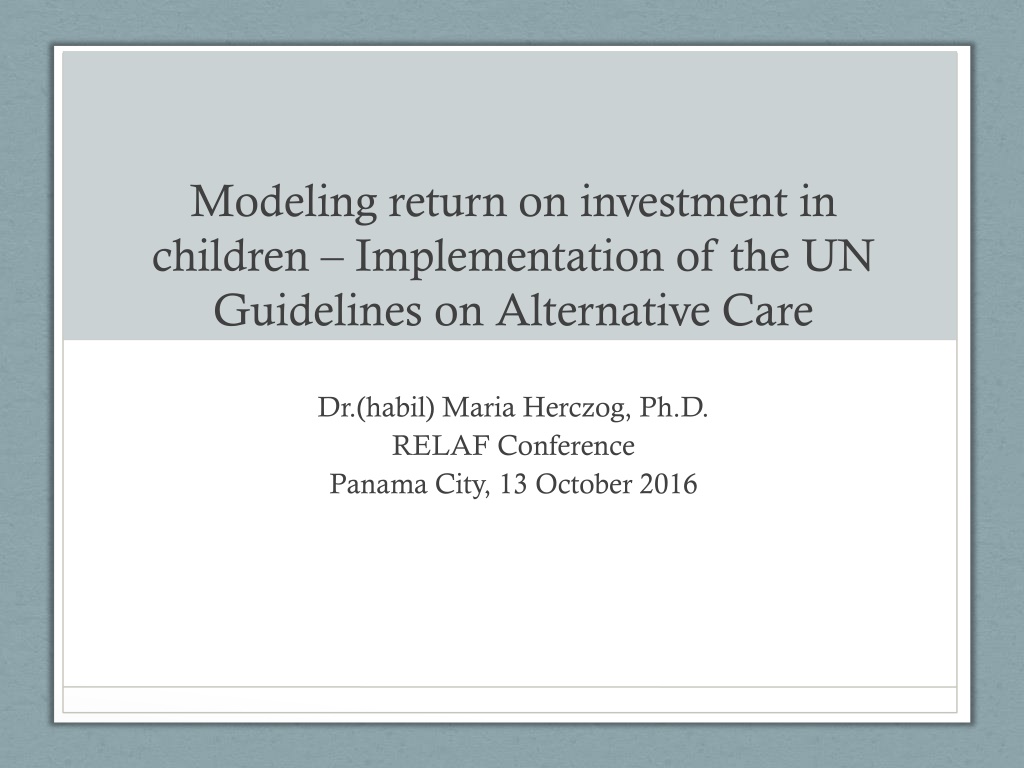Investing in Children: A Lucrative Business Strategy
Childonomics methodology presents a framework for measuring both direct and indirect investments in children's well-being, showcasing the financial benefits of prioritizing children's rights. The focus is on preventing separation from families, promoting reunification, and de-institutionalization. Through evidence-based models and case studies, the economic advantages of investing in children become clear, emphasizing the need for a child-friendly environment and transparent operations.
Download Presentation

Please find below an Image/Link to download the presentation.
The content on the website is provided AS IS for your information and personal use only. It may not be sold, licensed, or shared on other websites without obtaining consent from the author.If you encounter any issues during the download, it is possible that the publisher has removed the file from their server.
You are allowed to download the files provided on this website for personal or commercial use, subject to the condition that they are used lawfully. All files are the property of their respective owners.
The content on the website is provided AS IS for your information and personal use only. It may not be sold, licensed, or shared on other websites without obtaining consent from the author.
E N D
Presentation Transcript
Modeling return on investment in children Implementation of the UN Guidelines on Alternative Care Dr.(habil) Maria Herczog, Ph.D. RELAF Conference Panama City, 13 October 2016
Childonomics Methodology, framework, model for policy and decision makers, professionals, NGOs to measure the financial direct and indirect investment in well-being of children and the outcomes, benefits, return, including social return a life span approach taking into consideration the life cycles Based on the UNCRC, UN Guidelines on Alternative Care, GC19(2016) on public budgeting for the realization of children s rights Special focus on prevention of separation from the families,, reunification of children with their families - de- institutionalisation Evidence and quantifiable models to prove the economic benefit of investing in children
Childonomics Focus is on all type of services, provisions, including universal, targeted and specialised health, education, social support and services, play, out of school activities, housing, etc. Measurement is very complex, including non- quantifiable items subjective well-being, better community life, solidarity etc.
Childonomics Eurochild project with the Oxford Policy Management (OPM) team working on the theoretical framework with the support of the government of Malta and Romania to gather information and data, based on budget and other related statistical and service information. Focus group meetings with all stakeholders, including children on their views and ideas. Case studies demonstrating the examples of promising practices, approaches, main obstacles and questions
A world fit for children Investing in children is the most profitable business Excellent advocacy tool for all Convincing, measurable outcomes A child and citizen friendly environment Increasing awareness on the need for implementing child rights, more transparent operation, clarity on goals and tools DI, implementation of the UN Guidelines,



























